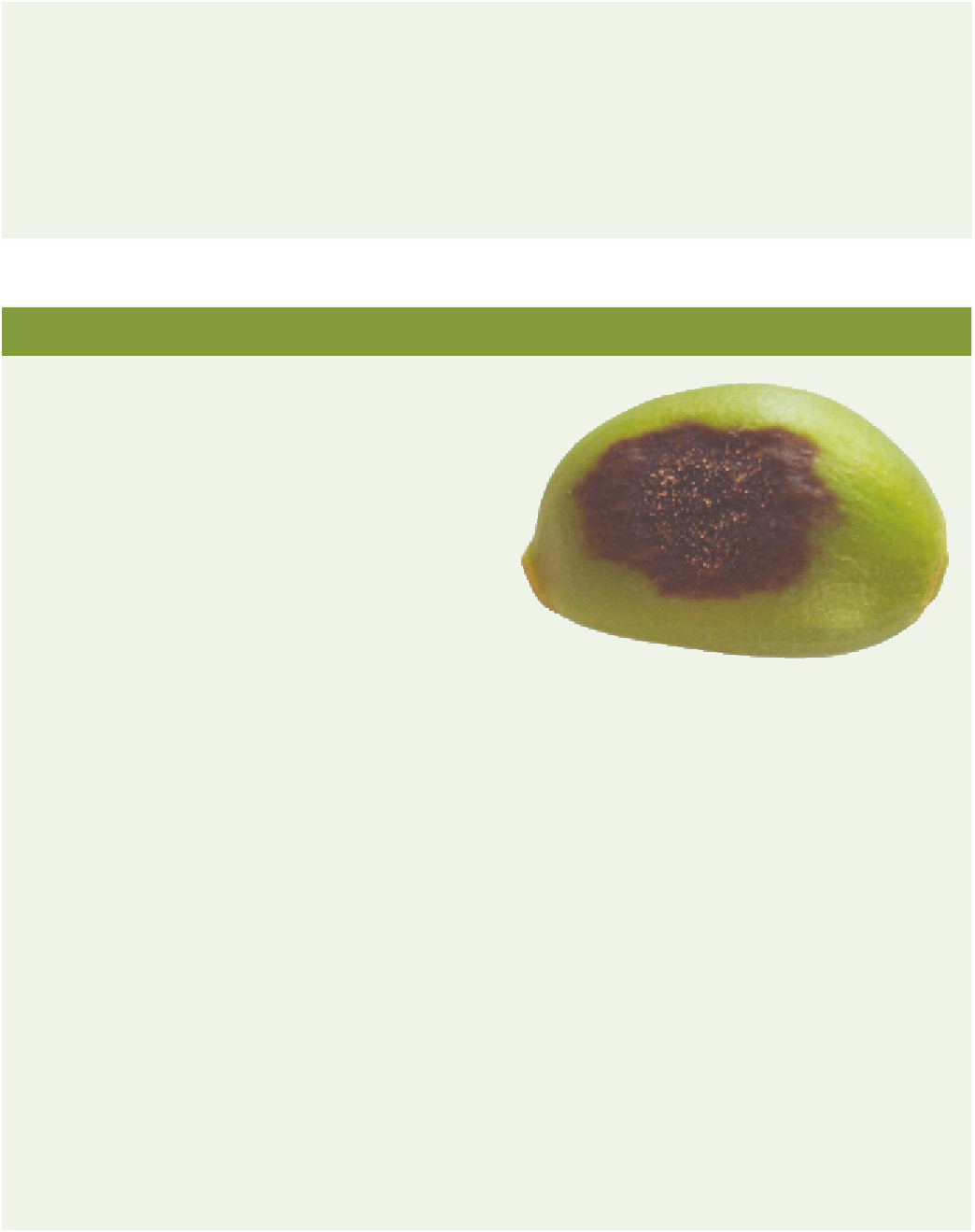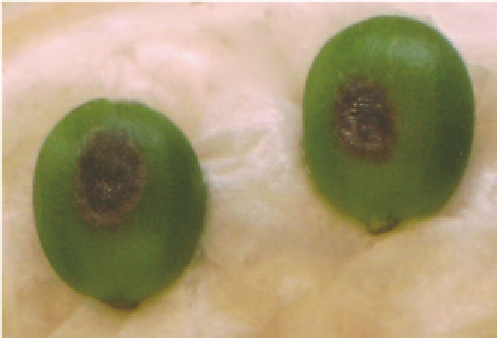Agriculture Reference
In-Depth Information
subsequent poor yield. Coffee plants that are severely
affected draw carbohydrate reserves from root and stem
tissue, which can lead to a decline of the plant. Subsequent
crops may fail to mature properly.
What to do if you suspect coffee leaf rust
This pathogen is a biosecurity risk to Australia. Any
suspected affected plants should be reported to the
nearest Department of Primary Industries or the Plant
Health Australia hotline (1800 084 881).
Observe quarantine regulations to prevent this disease
entering Australia.
Use resistant varieties and approved fungicides in areas
where the disease is present.
COFFEE BERRY DISEASE - BIOSECURITY THREAT
Cause
The fungus
Colletotrichum kahawae
(formerly known as
Colletotrichum coffeanum
).
Symptoms
Other forms of
Colletotrichum
can infect coffee but it is
only
Colletotrichum kahawae
that can infect the green
coffee berry.
Colletotrichum kahawae
produces two symptom types.
With the first symptom type, the infections appear as
dark, sunken spots that can spread and cover the whole
of the cherry. The surface of the lesion may become pink
with a layer of fungal spores. The bean is infected and
not suitable for processing.
Fig 7.6 Coffee berry disease,
Colletotrichum kahawae
, affecting a
green berry.
The second lesions type is associated with resistance to
the disease. A buff-coloured scab develops slowly on the
surface of the cherry with dark specks scattered on the
surface; spores are produced sparingly, if at all. The
cherries remain attached to the tree and the lesion may
eventually slough off. Flowers may also be affected by
the disease but this is less common.
Source of infection and spread
Infected cherries are the main source of inoculum and
spores are spread short distances by wind-driven rain.
Spores are spread over longer distances with vectors such
as birds or on the hands of coffee pickers. The spores
require free water to germinate. Optimum temperature
for lesion development is around 22°C.
Fig 7.7 Fruit with symptoms of coffee berry disease.
is present. Young, infected berries abscise, which directly
affects yields, while infected older berries may remain
attached to the tree, become mummified and provide
a reservoir of inoculum.
Importance
Coffee berry disease is present in Africa only and
therefore is a quarantine concern. The disease has caused
significant crop losses (up to 80%) in countries where it













